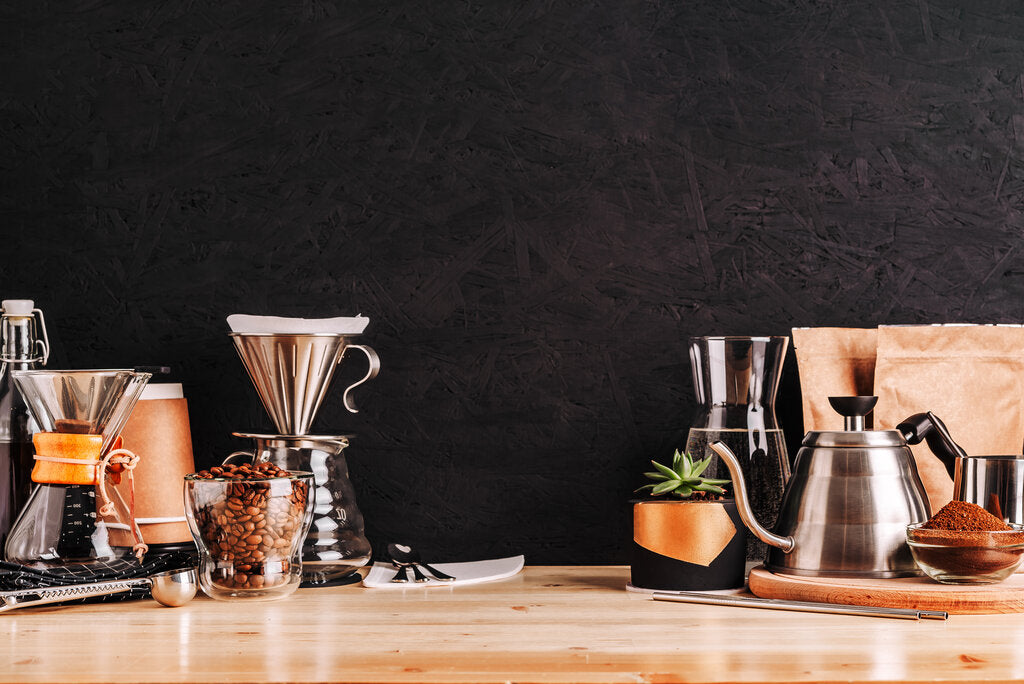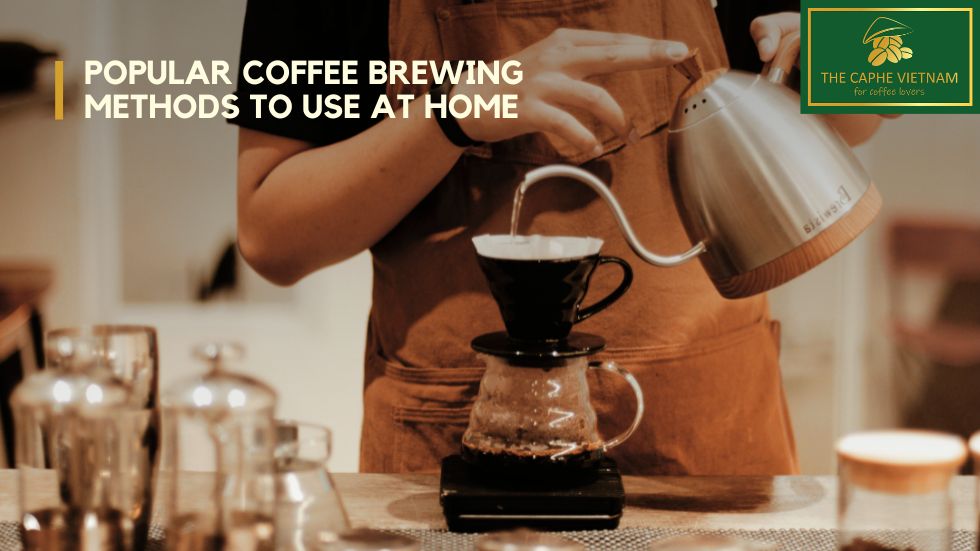Checking Out the Best Coffee Brewing Methods for Perfect Flavor Every Time
Checking Out the Best Coffee Brewing Methods for Perfect Flavor Every Time
Blog Article
The Scientific Research Behind Coffee Developing: How Temperature and Time Affect Your Beverage
Comprehending the science behind coffee developing exposes that temperature level and time are not simple variables but essential aspects that determine the beverage's taste account and overall high quality. The optimum developing temperature generally falls between 195 ° F and 205 ° F, while the duration of removal varies substantially throughout various methods. This interaction of variables can lead to a cup that is either fascinating or unsatisfactory. As we check out the nuances of these components, the inquiry emerges: how can one effectively equilibrium temperature and time to achieve that perfect brew?
The Chemistry of Coffee Removal
The chemistry of coffee removal dives into the complex processes that transform raw coffee beans right into the fragrant beverage enjoyed worldwide. This makeover primarily entails the solubility of numerous compounds present in the beans, which are affected by aspects such as grind size, water quality, and the developing approach utilized.
Throughout the developing procedure, warm water serves as a solvent, extracting soluble substances, including high levels of caffeine, lipids, acids, and sugars, from the coffee grounds. Each substance adds to the taste account, aroma, and body of the last beverage. Acids are responsible for intense and appetizing notes, while oils contribute to a rich mouthfeel.
The removal process is not consistent; different compounds liquify at different prices. The preliminary stages of brewing remove acids and sugars, resulting in a positive acidity, while extended removal can cause bitterness because of over-extraction of unfavorable substances. Comprehending these chemical communications is crucial for enhancing developing techniques, as the balance between extraction time and water temperature can dramatically affect the overall high quality of the coffee. Ultimately, mastering the chemistry of coffee removal is essential to accomplishing a tasty and well-shaped cup.
Suitable Brewing Temperatures
Discovering the right developing temperature level is crucial for opening the complete possibility of coffee tastes and aromas - coffee brewing methods. Research suggests that the ideal variety for brewing coffee exists in between 195 ° F to 205 ° F(90 ° C to 96 ° C) Within this variety, the removal procedure efficiently dissolves the preferable soluble substances in coffee beans, causing a balanced and flavorful cup
Developing at reduced temperatures, such as listed below 195 ° F(90 ° C ), may cause under-extraction, generating an acidic and weak brew with soft tastes. Alternatively, brewing at temperatures surpassing 205 ° F(96 ° C) can cause over-extraction, generating a severe and bitter taste due to the too much dissolution of undesirable compounds, such as tannins.
In addition, the suitable developing temperature can vary depending upon the coffee bean type and roast level. Lighter roasts often benefit from slightly higher temperatures to enhance their complicated flavor profiles, while darker roasts may be much better suited to lower temperatures to reduce resentment.
Ultimately, maintaining precision in brewing temperature levels is vital for attaining a harmonious balance of tastes, guaranteeing that every mug of coffee supplies a satisfying sensory experience.
Influence of Developing Time
Developing time plays an essential duty in establishing the taste account and general quality of coffee. Much shorter brewing times can result in under-extraction, leading to a weak or sour flavor, as not adequate soluble compounds are dissolved.
Ideal brewing time differs depending upon the technique used and the grind size of the coffee. A French press commonly needs concerning 4 mins, while espresso extraction is generally finished within 25 to 30 seconds. It is important to calibrate brewing time in conjunction with other variables, such as water temperature and coffee-to-water ratio, to accomplish the preferred taste profile.
Comprehending the effect of brewing time allows coffee fanatics to refine their brewing methods, inevitably improving the sensory experience of their mug (coffee brewing methods). With mindful focus to this variable, one can open the complete potential of the coffee, disclosing its distinct qualities and subtleties
Brewing Approaches and Their Impacts

For circumstances, approaches like French press and cold mixture permit a longer steeping time, resulting in a fuller body and robust flavor due to enhanced removal of oils and soluble solids. Alternatively, coffee developing makes use of high stress and a much shorter removal time, creating a concentrated shot that highlights intense flavors and a rich crema.
Pour-over techniques, such as Chemex or V60, provide a more controlled extraction procedure, allowing the maker to manipulate flow price and water distribution, which can improve brightness and clearness. On the other hand, percolation approaches cycle water through the coffee grounds several times, causing a more powerful, commonly bitter taste.
Finally, making use of paper filters versus metal filters can also impact the final preference; paper filters typically produce a cleaner mug by capturing oils and fine bits, while metal filters allow even more oils useful content to pass through, contributing to a fuller mouthfeel - coffee brewing methods. Understanding these nuances can raise the coffee experience dramatically
Tips for Refining Your Brew
A well-executed brew can change even the simplest coffee into an exceptional experience. To achieve this, attention to information is crucial. Begin with top quality, freshly baked beans, as their flavor account lessens in time. Grind the beans prior to brewing to maximize freshness, making sure the work dimension matches your brewing approach-- coarser for French press and finer for espresso.
Water top quality additional reading plays an essential role; use filtered water without contaminations. The optimal developing temperature varies between 195 ° F and 205 ° F(90 ° C to 96 ° C ) As well hot can burn the coffee, while also awesome may under-extract flavors.
Timing is just as crucial. For immersion techniques, soaking for 3 to five minutes is optimal, whereas drip techniques usually take about 5 mins. Try out mixture times to discover your recommended toughness.

Conclusion
In recap, the elaborate relationship in between temperature level and time is critical in the coffee brewing process. Understanding these clinical principles empowers people to fine-tune their developing methods, ultimately leading to an extra satisfying and balanced coffee experience.
Understanding the science behind coffee developing discloses that temperature and time are not mere variables yet critical components that determine the beverage's flavor profile and overall high quality. Comprehending these chemical communications is vital for optimizing developing techniques, as the equilibrium in between extraction time and water temperature can dramatically affect the overall high quality of the coffee.Developing time plays an essential role in establishing the flavor account and overall high quality of coffee. By concentrating on these components-- bean top quality, grind size, water temperature level, soaking time, and proportion-- you can boost your coffee brewing procedure, resulting in a regularly superior cup.
In recap, the intricate relationship in between temperature level and time is critical in the coffee developing procedure.
Report this page